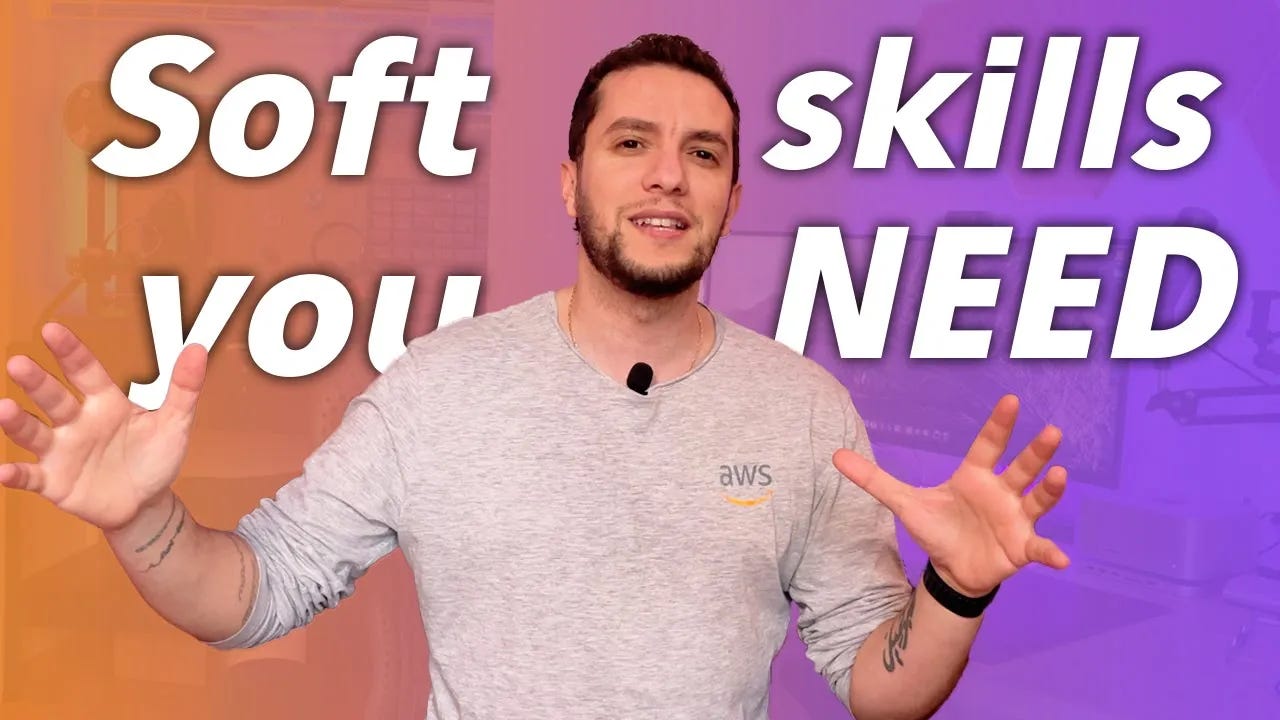3 things I wish I knew before becoming a cloud solutions architect
With only three weeks left in the year, now is the time to speed run any outstanding 2023 resolutions. ("20 books in 20 days, anyone?")
And if you have ambitious goals for your Cloud Solutions Architecture career, then let me share with you 3 Things I Wish I Knew Before Becoming A Solutions Architect.
Let's get right to it 💪🏻
🫰🏻 Hear me out
Hindsight is interesting, and even though I might have read these lessons from books, or from people I followed online, we often don't learn the lessons until we actually go through the daily experiences ourselves.
I know that you will read some of these and be like, yeah, of course, that's obvious 🤷🏻 But until you actually implement that lesson in your daily life, it's going to be hard to internalize it, and it's going to keep showing up again and again.
Now onto lesson number 1
1. Effective communication is paramount 📢
You can be the biggest expert, have the greatest knowledge in a technology, deliver the best results, but until you get good at communication, you're going to struggle to have your solutions see the light.
I learned this one the hard way. I used to think because I spent so much time designing my solution around all the requirements and fine-tuning it for all the organization’s realities, then it's obvious to move forward with it, that everyone will see how on point it is.
And the result was that every time I'm presenting my solution to stakeholders, or discussing it with my peers, I would sort of rush through it, and then I would wonder why people weren't as excited as I am.
But accepting the fact that getting good at "selling" is part of the job, is what really flipped my mindset. I had to learn throughout the years how in business, everything is around "people", how communicating your solution right is as important as building it, and that's why in the channel I have many videos (such as this one) about the soft skills you got to cultivate to have a meaningful impact in this job. And I will do my best to continue to share more of these lessons with you.
2. Be afraid, and do it anyway 🤷🏻
Unless you do the things that feel scary to you, your career won’t grow as much.
Scary things are good.
But I think a lot of times we take it as a sign that we shouldn't do something.
Creating “SA Magic”, my signature course where I help IT professionals transition to the Cloud Solutions Architect role under 8 weeks, felt scary because I kept thinking "people might not join" so I'm not going to do it, like that's a sign that I shouldn't do it.
No, fear, isn't necessarily your gut telling you that it's not a good idea. I actually think it's the opposite. I think fear shows you what matters to you.
You're not afraid of this thing because it's a bad idea, you are afraid of it because the outcome is important to you.
Well, ok, let me clarify something here: Not doing something because it’s not aligned with your vision, or doesn't feel aligned with your values is different from thinking "this thing is scary because I might invest time into it and it might fail"
Big difference.
And I think that's why we need to get better at doing things that feel scary to us. Because that's how we grow. After all, if you're not growing, you're dying.
3. Boring is good - I promise
The stuff that really truly matters in growing your skills can feel really, truly boring. And that's why most people don't do it.
My brain loves sparkly new things, it loves novelty, it loves chasing new frameworks, and starting new projects to learn all these new things, but I've realized that it's not about doing all the shiny fun things, and it's actually more about:
- Structure
- Systems
- Consistency
- ... things that do not come naturally to me 😀
I realized I have to prioritize getting good at boring things. Does that make sense?
it's always going to be so much more fun to start a new Amplify POC and connect it with Figma or chase some shiny idea than it is going to be to sit down and read through the Well Architected Framework 42 pages, or go through the latest edition of TOGAF with its 6 parts of seemingly unending standards.
I still remember how painful it was for me, a few years back, to just force myself to sit and go through the 2007 research paper that resulted in Amazon creating DynamoDB a few years later. I found myself thinking "It’s extremely boring to read a white paper, that's just for nerds" right?
Do you wanna take a stab at it with me? Let's read it together:
Want More?
That's it for now, but I provide more details - especially if you're a visual learner - in my YouTube video with the same title >> click to watch here





